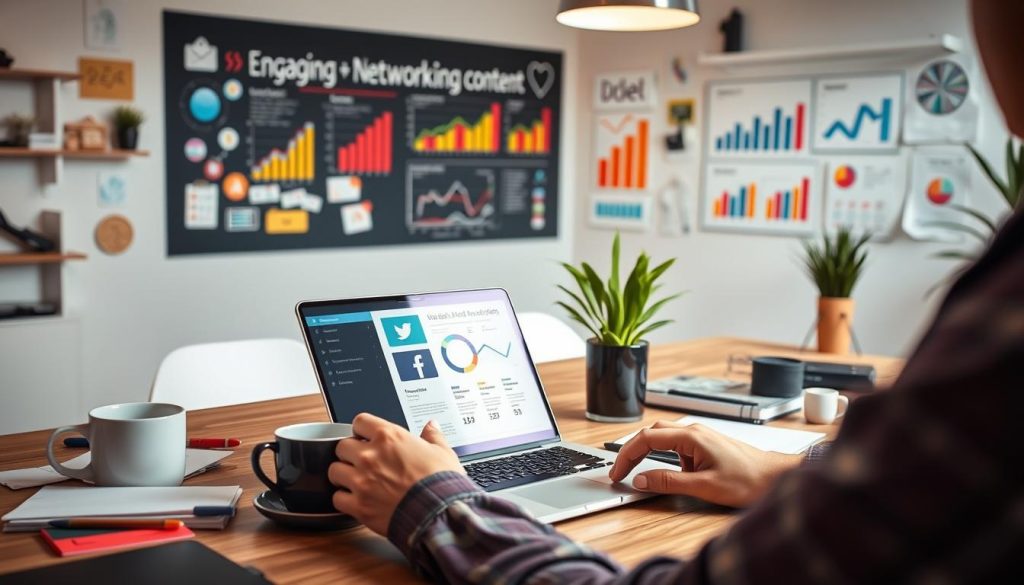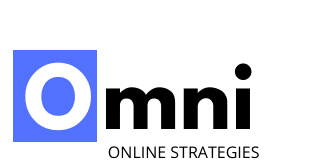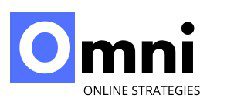In the world of professional networking, knowing how to deal with LinkedIn’s spam filters is key. It’s important for marketers, entrepreneurs, and ambitious professionals. Understanding LinkedIn’s spam detection helps keep your outreach efforts effective and within the rules.
This guide will help you understand LinkedIn’s spam filters. You’ll learn how to write messages, improve your profile, and make content that connects with people. By using these strategies, you can build real relationships and achieve your business goals on LinkedIn.
Key Takeaways
- Understand the key differences between spam and legitimate content on LinkedIn
- Implement best practices for crafting personalized, relevant messages that resonate with your connections
- Optimize your LinkedIn profile to showcase your expertise and attract the right opportunities
- Create valuable, original content that provides genuine insights and engages your network
- Leverage LinkedIn’s networking features to build authentic, long-lasting professional relationships
Understanding LinkedIn’s Spam Filters
To keep your LinkedIn network strong, it’s key to know the spam rules. Following these guidelines helps you avoid penalties and connect better with others.
What Constitutes Spam on LinkedIn?
LinkedIn looks at several things to spot spam, including:
- Mass, impersonal connection requests or messages
- Irrelevant or promotional content that doesn’t provide value to your network
- Excessive self-promotion without engaging with others
- Automated or bot-generated activity
- Repeated attempts to circumvent LinkedIn’s policies
Key Differences Between Spam and Legitimate Content
Spam and real content differ in their purpose and value. Spam seeks attention or traffic, while real content aims to help your network.
| Spam | Legitimate Content |
|---|---|
| Impersonal, mass-produced messages | Personalized, relevant, and helpful messages |
| Primarily promotional or self-serving | Informative, educational, or thought-provoking |
| Disregards the interests and needs of the recipient | Aligns with the recipient’s professional interests and goals |
Knowing these differences helps you stay within LinkedIn’s rules. This way, you build real professional connections.
Best Practices for LinkedIn Messaging
Personalization is crucial for LinkedIn messaging to stand out and connect deeply. Clear, relevant messages help avoid spam filters and boost response rates.
Personalization: Why it Matters
On LinkedIn, generic messages don’t work. Successful clean LinkedIn outreach means understanding your recipient’s background and interests. Personalized messages show you’ve done your homework and value their time.
Crafting Clear and Relevant Messages
For LinkedIn messaging best practices, focus on clarity and relevance. Short, direct messages are best. Clearly state your value and why they should reply. This approach grabs attention and encourages positive responses.
| Best Practices | Avoid |
|---|---|
|
|
Using these LinkedIn messaging best practices can greatly enhance your clean LinkedIn outreach. It helps you connect more effectively with your audience.
Building an Engaging LinkedIn Profile
Making a great LinkedIn profile is key for LinkedIn profile optimization and avoiding LinkedIn spam penalties. Your profile is like a digital business card. It’s your chance to make a good first impression. Your profile picture and headline and summary are very important.
Importance of a Professional Profile Picture
Your profile picture is the first thing people see. It should be high-quality and professional. Don’t use photos that are too casual or unprofessional. This can hurt your credibility and make it hard to connect with others.
Writing a Compelling Headline and Summary
Your headline and summary are important for showing what you’re good at. Your headline should be short and to the point. Your summary should give more details about your skills and experiences. Use it to show what makes you special and how you can help others.
By spending time on your LinkedIn profile, you can get noticed more. You’ll attract better connections and show off your skills. This way, you follow LinkedIn’s rules and avoid LinkedIn spam penalties.
| Profile Element | Best Practices |
|---|---|
| Profile Picture |
|
| Headline |
|
| Summary |
|
Creating Valuable Content for Your Network
In the fast-changing world of LinkedIn content creation, making valuable and engaging content is key. Sharing original insights and articles helps you connect deeply with your network. By engaging with comments and discussions, you become a leader and build real relationships.
Sharing Original Insights and Articles
Sharing your unique views on trends, best practices, or new tech can make you stand out. Use your knowledge to create LinkedIn content creation that teaches, enlightens, and motivates. Whether it’s a detailed article or a short, insightful post, your original content will make you credible.
Engaging with Comments and Discussions
Interacting with your network through comments and discussions is a great way to build real connections and clean LinkedIn outreach. Spend time responding thoughtfully to comments, asking interesting questions, and sharing valuable insights. By doing this, you show you’re willing to listen, learn, and work together, building trust and stronger relationships.

“Effective content creation on LinkedIn is not about broadcasting; it’s about engaging, educating, and building meaningful relationships with your network.”
The secret to valuable content on LinkedIn is focusing on quality over quantity. Aim to create content that resonates with your audience and matches your goals. This way, you’ll improve your LinkedIn content creation and achieve clean LinkedIn outreach that leads to lasting connections.
The Role of Connection Requests
Building a strong LinkedIn network is key for professionals looking to grow and find new chances. But, it’s important to know how to send connection requests the right way. This is to avoid being seen as spam by LinkedIn’s systems.
How to Send Personalized Connection Requests
When you send connection requests on LinkedIn, make sure to personalize each one. Don’t use generic messages. Instead, write a short, meaningful message that shows you’ve taken the time to think about the person you’re reaching out to.
This approach not only shows you’re interested but also helps build real connections. It makes your network stronger and more meaningful.
Understanding LinkedIn’s Connection Limits
- LinkedIn has limits on how many connection requests you can send each day and week. This is to keep the platform safe and reliable.
- If you go over these limits or act suspiciously, LinkedIn might see you as spam. This could lead to your account being restricted or even suspended.
- To avoid this, learn about LinkedIn’s rules for connection requests. Always be thoughtful and careful when growing your network.
By sending personalized connection requests and following LinkedIn’s limits, you can grow your professional network. This way, you avoid being seen as LinkedIn spam.
Avoiding Common Mistakes on LinkedIn
LinkedIn can be tricky to navigate. It’s important to avoid common mistakes that can hurt your career. Two main areas to watch out for are using too many keywords and ignoring the platform’s etiquette.
Overusing Keywords: When Less is More
Using the right keywords on LinkedIn is key for LinkedIn spam filter compliance. But, don’t overdo it. Too many keywords can trigger spam filters and lead to penalties. The goal is to use keywords wisely, making your content better, not worse.
Ignoring LinkedIn Etiquette
LinkedIn is a professional space. It’s vital to follow etiquette to avoid LinkedIn spam penalties and make real connections. Be careful with your messages, avoid spammy requests, and engage genuinely. Following the platform’s rules helps you build a good reputation and real relationships.
Success on LinkedIn comes from finding the right balance. Be careful of these mistakes to use the platform well. This way, you’ll be seen as a valuable and trustworthy professional in your field.
Understanding LinkedIn’s Community Guidelines
Being a pro on LinkedIn means knowing the community guidelines. These rules help keep the platform positive and useful for everyone. They make sure the content shared is good and follows the rules.
Key Rules for Content Sharing
There are important guidelines for sharing content on LinkedIn:
- Don’t share spam or too much promotional stuff. LinkedIn doesn’t allow unsolicited messages or repetitive content.
- Always respect others’ work. Share original content or give credit where it’s due. Plagiarism and copyright issues are big no-nos.
- Be professional and respectful. LinkedIn is for work, so keep it clean and avoid offensive language.
- Keep personal info private. Don’t share stuff that’s meant to be kept secret without permission.
Consequences of Violating Guidelines
Not following LinkedIn’s rules can lead to big problems:
- Your account might get suspended or banned. LinkedIn can do this if you keep breaking the rules.
- Spammy content gets seen by fewer people. This means your message won’t reach as many folks.
- It can hurt your professional image. Breaking the rules can make you look bad on LinkedIn.
By sticking to LinkedIn’s guidelines, you help keep the platform great. This way, you avoid trouble and help everyone else too.
Engaging in Meaningful Networking
LinkedIn is more than a digital contact list. It’s a place to build real, helpful professional connections. To get the most out of LinkedIn, focus on making real connections and engaging with your network in a meaningful way.
Fostering Genuine Relationships
Quality is more important than quantity on LinkedIn. Don’t just send out connection requests or generic messages. Take the time to personalize your outreach. Learn about the people you want to connect with and find something you both have in common to start a real conversation.
Offer value by sharing industry insights or introducing them to someone in your network. This can help you build genuine relationships.
Networking Through Groups and Events
- Join LinkedIn groups that match your industry or interests. These groups can be a great place for clean LinkedIn outreach. You can meet people with similar interests and show off your knowledge.
- Go to virtual or in-person events that fit your career goals. Use these chances to meet new people and strengthen your connections.
- Be an active member of your LinkedIn network. Regularly comment on posts, share useful content, and interact with your connections. This helps build stronger relationships.
By focusing on LinkedIn networking strategies that value authenticity and mutual benefit, you can build a professional network that helps you grow in your career.

| Authentic Networking Practices | Inauthentic Networking Practices |
|---|---|
| Personalized outreach and engagement | Impersonal, mass connection requests |
| Sharing relevant, valuable content | Posting irrelevant or promotional content |
| Active participation in groups and events | Passive, sporadic LinkedIn presence |
“The true value of LinkedIn lies in building genuine relationships, not just collecting connections.”
Utilizing LinkedIn Analytics
As a savvy professional on LinkedIn, using analytics is key. These tools give you insights into your content’s performance. They help you improve your strategy and follow LinkedIn’s rules.
Inspecting Engagement and Reach
LinkedIn’s analytics dashboard is full of useful data. It shows how your posts are doing, from impressions to shares. This helps you understand what your network likes.
With this info, you can make your content better. You can catch your audience’s eye more effectively.
Adjusting Strategy Based on Insights
LinkedIn analytics should guide your strategy. See if some content works better than others. Find out what your audience likes.
By analyzing this data, you can make smart choices. You can decide what to post and when. This way, you avoid spam filters and keep your network engaged.
| Metric | Description | Implications |
|---|---|---|
| Impressions | The number of times your content has been seen by users | Indicates the reach and visibility of your content |
| Clicks | The number of times users have interacted with your content by clicking on it | Reflects the level of engagement and interest in your content |
| Engagement Rate | The percentage of your audience that has engaged with your content (likes, comments, shares) | Provides insights into the relevance and attractiveness of your content |
Using LinkedIn analytics keeps you ahead. It helps you avoid spam filters and grow a strong network. This network supports your business goals.
Staying Updated with LinkedIn Changes
Keeping up with LinkedIn’s changes can be tough. But, it’s crucial for staying in line with their spam filters and community rules. By following LinkedIn’s official blogs and updates, users can stay ahead and adjust their plans as needed.
Following LinkedIn Blogs and Updates
LinkedIn’s official blog and newsroom are key for staying current. They share the latest on platform updates, new features, and best practices. This helps users keep their activities and content in line with LinkedIn’s changing standards.
Joining Professional Groups for Insights
Users can also learn a lot from professional groups on LinkedIn. These groups talk about the latest changes, sharing real experiences and tips. By joining these discussions, people can understand LinkedIn better and keep up with new trends and rules.
FAQ
What constitutes spam on LinkedIn?
LinkedIn sees spam as unwanted, off-topic, or too many messages, requests, or posts. This includes sending lots of messages at once, posting ads without adding value, and trying to get around rules.
How can I craft effective and compliant LinkedIn messages?
To write good LinkedIn messages, make them personal, relevant, and useful. Don’t send the same message to many people or use generic templates. Keep your messages short and show you understand what the other person needs.
What are the best practices for building an engaging LinkedIn profile?
For a great LinkedIn profile, use a professional photo, write a catchy headline and summary, and list your skills and experience. Don’t overuse keywords and keep your profile real and consistent.
How can I create valuable content for my LinkedIn network?
Share original ideas, interesting articles, and meaningful talks to engage your network. Post content that adds real value, like industry news, helpful tips, or leadership insights. Stay away from self-promotion and irrelevant posts.
What are the guidelines for sending effective LinkedIn connection requests?
When asking to connect on LinkedIn, make each message personal and explain why you want to connect. Don’t send out lots of requests at once or use the same message for everyone. Follow LinkedIn’s limits to keep your network healthy and avoid being seen as spam.
How can I ensure I’m following LinkedIn’s community guidelines?
Learn about LinkedIn’s community rules, which cover what you can share, what’s not allowed, and what happens if you break the rules. Make sure your posts, messages, and networking fit within these guidelines to stay in good standing.
How can I leverage LinkedIn analytics to improve my strategy?
Use LinkedIn’s analytics to see how your content is doing, how people are interacting with it, and how far it’s reaching. Look at the data to see what’s working and change your approach. This helps you make your content and networking better and keeps you in line with LinkedIn’s rules.


